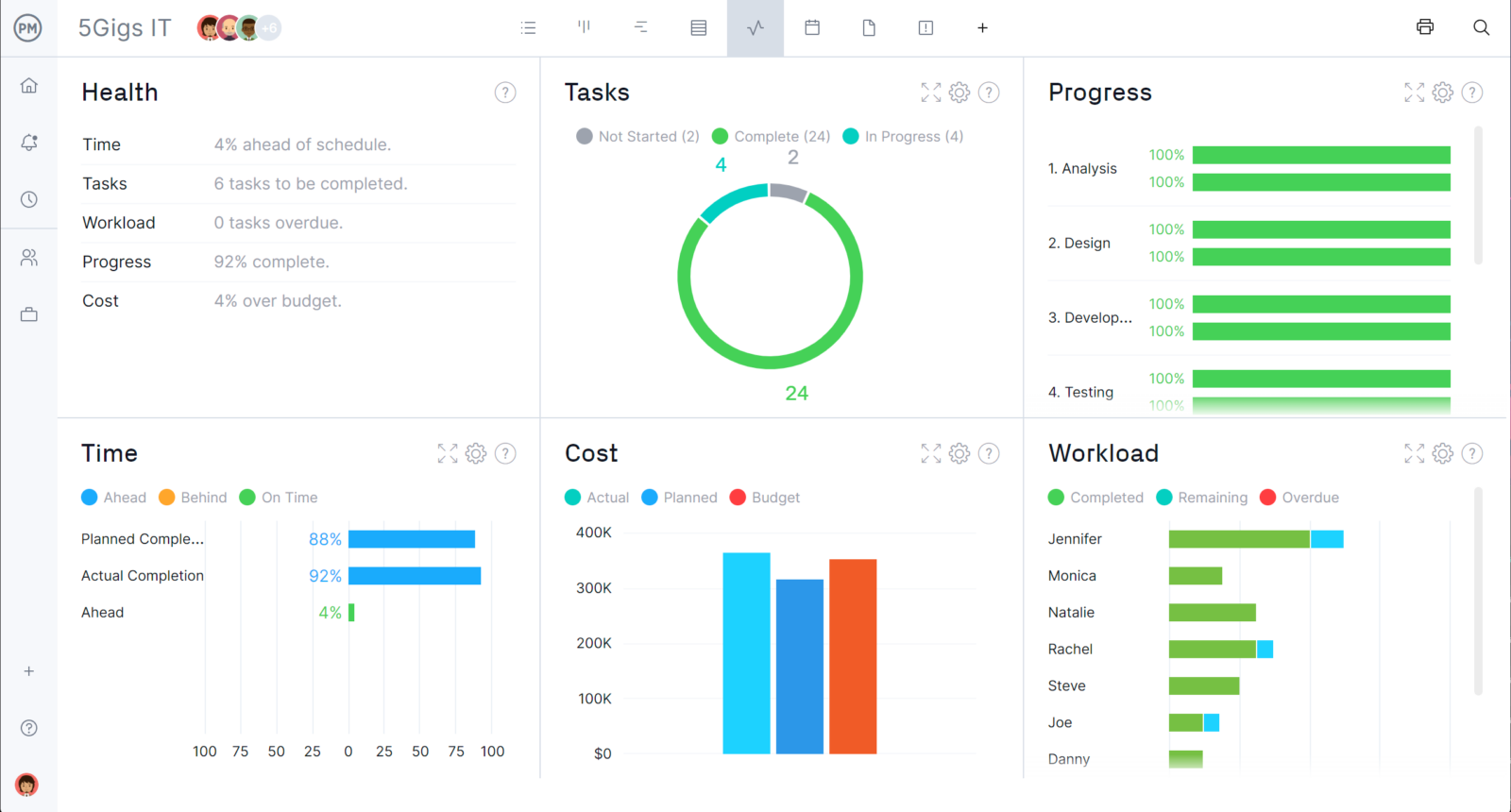Projects cost money. Everyone knows that. But what’s harder to discern is if the project is worth the investment. The last thing stakeholders want is to discover the project isn’t financially effective. That’s where the cost performance index comes in.
We’ll discuss what the cost performance index does and how it does it below. We’ll share the formula for calculating the cost performance index in project management and even provide an example to better illustrate how it works.
What Is the Cost Performance Index (CPI)?
The cost performance index is a way to measure the financial performance of a project. It can also help to make your budgeted resources more cost-effective. The cost performance shows if the project is effectively staying on budget.
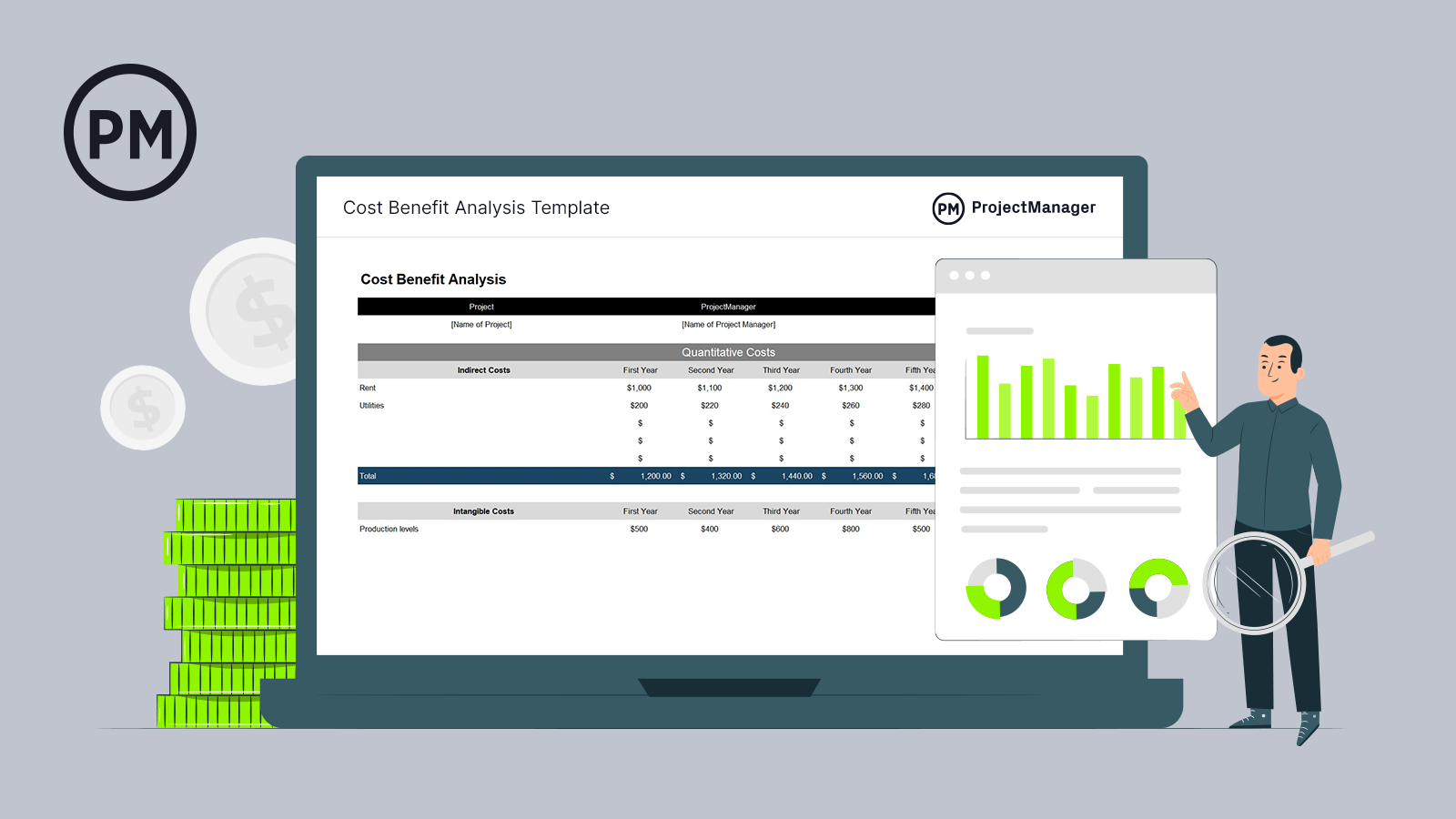
Get your free
Cost Benefit Analysis Template
Use this free Cost Benefit Analysis Template for Excel to manage your projects better.
Project costs can vary. The project budget is only our best estimate of what it will cost. But that budget, once approved, rules your project’s costs. If you go over the budget, the project can fail. Therefore, tracking the project’s cost performance as expenses change over its life cycle is an essential part of project management.
The cost performance index in project management is part of the larger earned value management technique. Earned value management uses schedule, costs and scope to measure project performance. It’s based on the planned and actual values of those metrics to predict the future and thereby allow project managers to adjust their projects accordingly.
Using the cost performance index helps to keep track of project costs and increases the probability of them being completed on budget. Project management software is another tool in the work of managing project costs. ProjectManager is award-winning project management software that helps compare your planned costs against your actual costs in real time. Our robust Gantt chart allows you to set a baseline after you’ve scheduled your tasks, costs and resources. Now you can track cost variance in real time across our software. Get started with ProjectManager today for free.
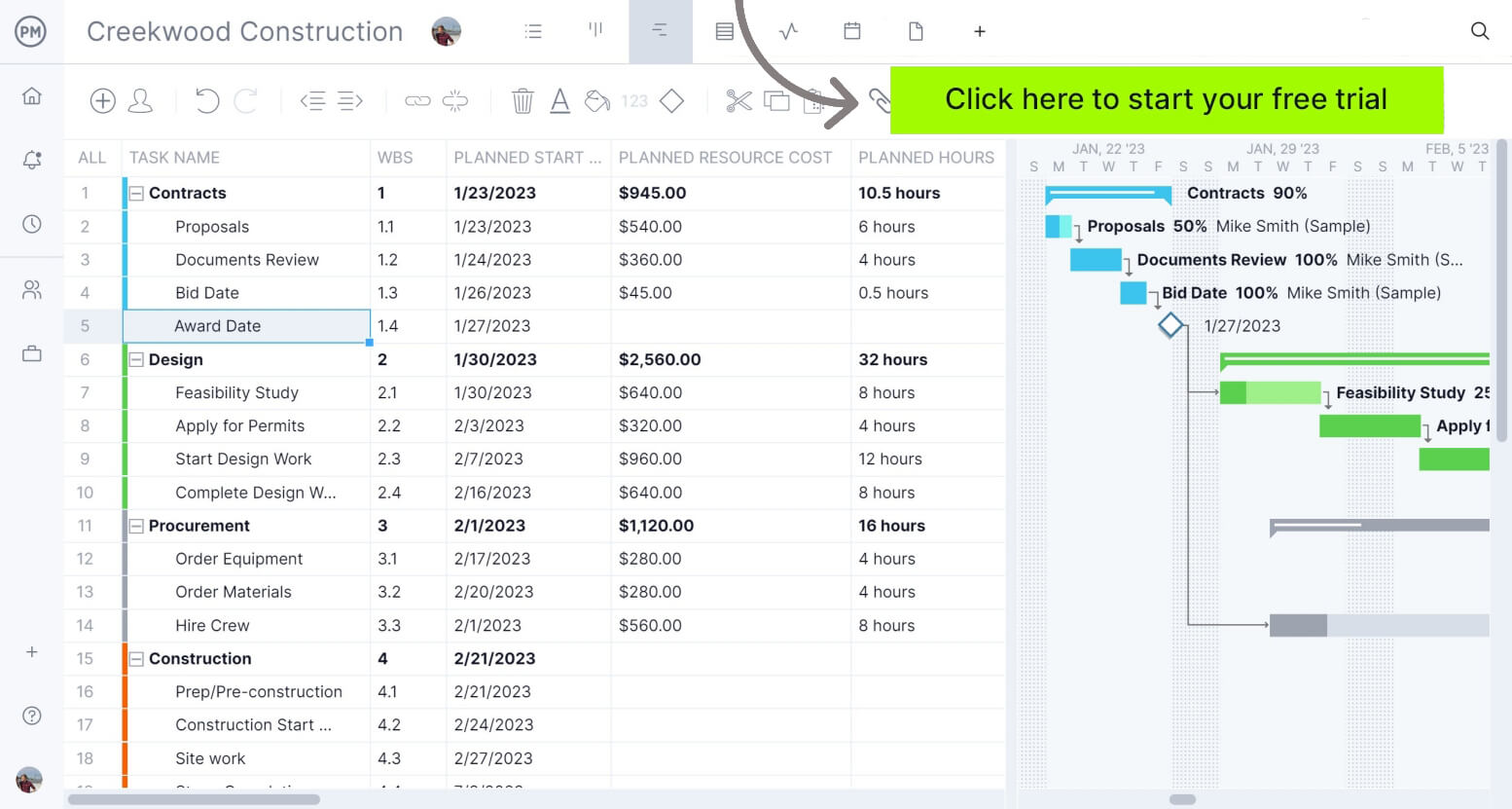
How to Calculate the Cost Performance Index
To calculate the cost performance index, you’ll need to first understand the earned value and the actual cost formulas. These are part of the larger cost performance index formula, which we’ll get to shortly. First, let’s explain what earned value and actual cost are.
Earned Value (EV)
In project management, earned value is the level of work that’s currently completed compared to the amount of work that was planned to be completed at that point in the project. To calculate the earned value in a project, take the percent of work done and multiply that by the percentage of the total project budget or the budget at completion (BAC) of the project.
Earned Value (EV) = Percent of Work Completed x BAC
Actual Cost (AC)
The actual cost is as it sounds, what you’ve spent on the project at a given point in time. You don’t have to use a formula to calculate this, it’s the amount of money that has been spent at that point in the project. It’s used in calculating the cost performance index and also cost variance.
Cost Performance Index Formula
Once you have the earned value and the actual cost for your project, you can then calculate the cost performance index. This is done by dividing the earned value by the actual value. If you get a cost performance index ratio with a higher value than one, then that means the project is performing well in terms of its budget. Here’s the cost performance index formula.
Cost Performance Index (CPI) = Earned Value (EV) / Actual Cost (AC)
Cost Performance Index Example
To better illustrate what we’re talking about, let’s explore a cost performance index example. Let’s look at a project that has a budget of $1,000 and a life cycle of one month in which 100 units need to be manufactured. The project is halfway through its schedule
The earned value will determine how much work is currently done in comparison to the work that should have been completed by this point in the project. At the halfway point, 50 units have been produced. That’s 50 percent multiplied by the $1,000 budget which is 500.
Next, you want to identify the actual cost. Let’s say that the actual cost at this halfway point in the project is $500. Now, we’re ready to find out the cost performance index by dividing the earned value, which is 500, by the actual cost which is 500. That gives us a cost performance index of one.
Free Cost-Benefit Analysis Template
Before you measure the financial performance of a project, you need to determine if it’s worth undertaking in the first place. Download this free cost-benefit analysis template for Excel to outline project information, quantitative costs, benefits and more. It will help you decide if it makes sense to undertake the project in the first place.
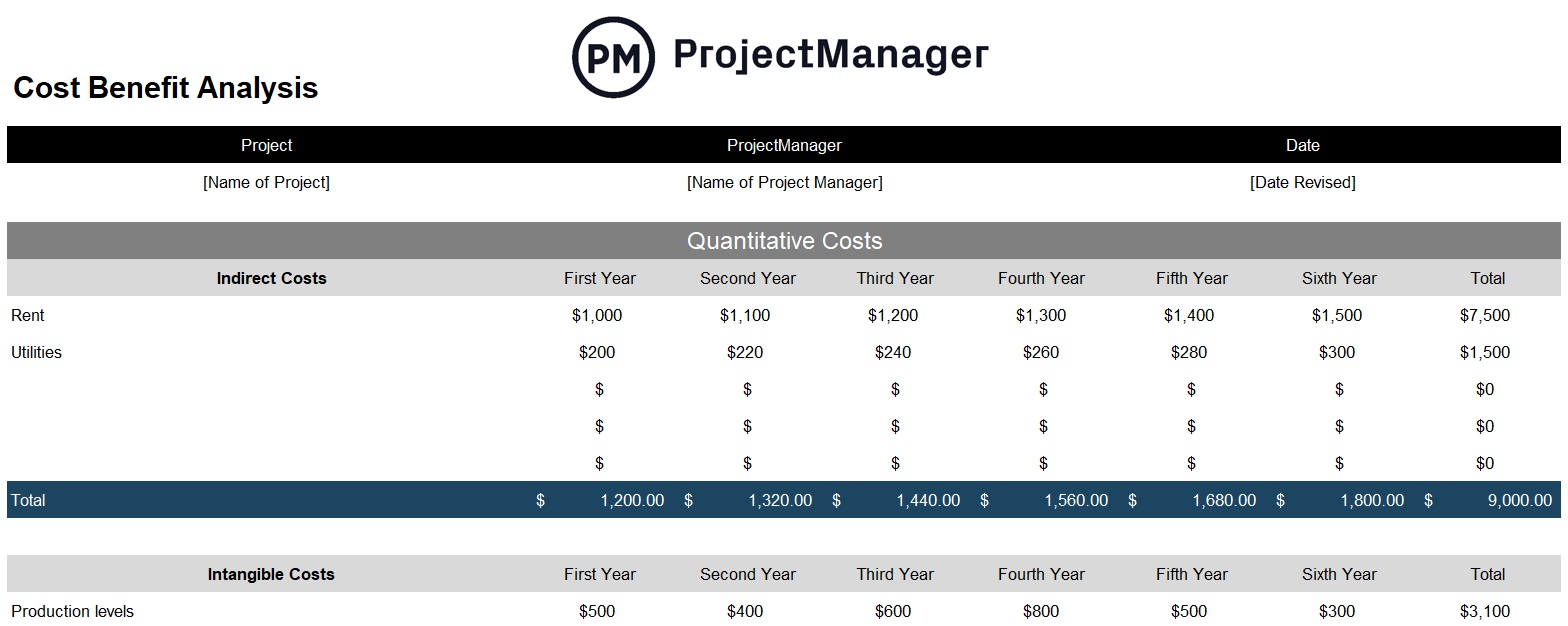
What Does the CPI Result Mean?
As defined earlier, the cost performance index will determine if you’re on the right track budget-wise. In our above cost performance index example, the calculation came out as one. If you recall, a value of one means that the project is performing as expected in terms of its budget. If the value is more than one, then you’re doing better than expected, but if it’s under one, then you’re spending more than you should at this point in the project and you have to figure out how to reduce your costs.
Why Is the Cost Performance Index Important?
The cost performance index is an important economic tool that benefits more than just project management. As we’ve seen, it’s a vital formula for measuring the costs spent on a project as compared to those that were planned over a specific time period. Its main importance in project management is that it measures the financial effectiveness and efficiency of the project.
Related Value Management Metrics
Of course, the cost performance index is only one of many value measurement metrics that project managers use when tracking their projects. There are four—planned value, cost variance scheduling performance index and schedule variance—that we’d like to highlight. Below is a short definition of each.
Planned Value (PV)
The planned value in a project is another way of saying the budget for the work that is scheduled for execution. It’s the portion of the project budget that’s planned to be spent at any given point in time in the project. Planned value also goes by the term budgeted cost of work schedule (BCWS). It is different from actual costs, which is the money that has been spent on the work at that point in the schedule. So, you can look at planned value as the project cost over the time baseline as measured at any point in the schedule.
Cost Variance (CV)
Another tool to evaluate the financial performance of your project is cost variance. This is where one compares the budget as it was planned at the beginning of the project with how much money has been spent. In other words, a project manager can look at the budgeted cost of work performed and the difference between that and the actual cost of work performed. This is one way to determine if the project is financially on track or if you’re overspending or underspending.
Schedule Performance Index (SPI)
The schedule performance index is a way to compare the actual progress of a project compared to the planned progress. It indicates the efficiency of the project in terms of its schedule or time spent on tasks. The schedule performance index is part of a larger measurement called earned value management.
Schedule Variance (SV)
Where cost variance measures the difference between the planned and actual costs of the project, schedule variance does the same but in terms of time. It measures how much the project is ahead, behind or on schedule. It does this by looking at the actual progress of the project and placing that against the planned progress for that point in the project. As with all these performance measurements, if the project is behind schedule then resources can be reallocated to get it back on track.
ProjectManager Helps Manage Project Costs
Project costs are one of the major constraints that project managers must control in order to deliver a successful project. Project management software helps them plan those costs. ProjectManager is award-winning project management software that goes even further, helping to plan, but also manage and track project costs in real time. As teams execute their tasks, project costs are automatically updated in real time so project managers have a window into the budget and how it’s being spent.
Track Costs With Real-Time Dashboards
Project managers need to monitor project costs at any time. Our live dashboards make it easy for them to have a high-level overview of the project’s cost by just toggling over to the dashboard, which is constantly being updated with live data that is displayed in easy-to-read graphs and charts. There are many metrics on the dashboard, such as costs, but also progress, health and much more. Unlike lightweight tools, you don’t have to waste time setting up our dashboard. It’s ready when you are.

Get More Details With Customizable Reports
When you need more information than the dashboard can provide, use our customizable reporting feature. It’s easy to generate a number of reports, such as status reports or portfolio reports if you’re managing more than one project. There are also reports on variance, workload and timesheets, all of which address project costs. All reports can be filtered to focus on what’s important and can be shared across various formats to keep stakeholders informed.
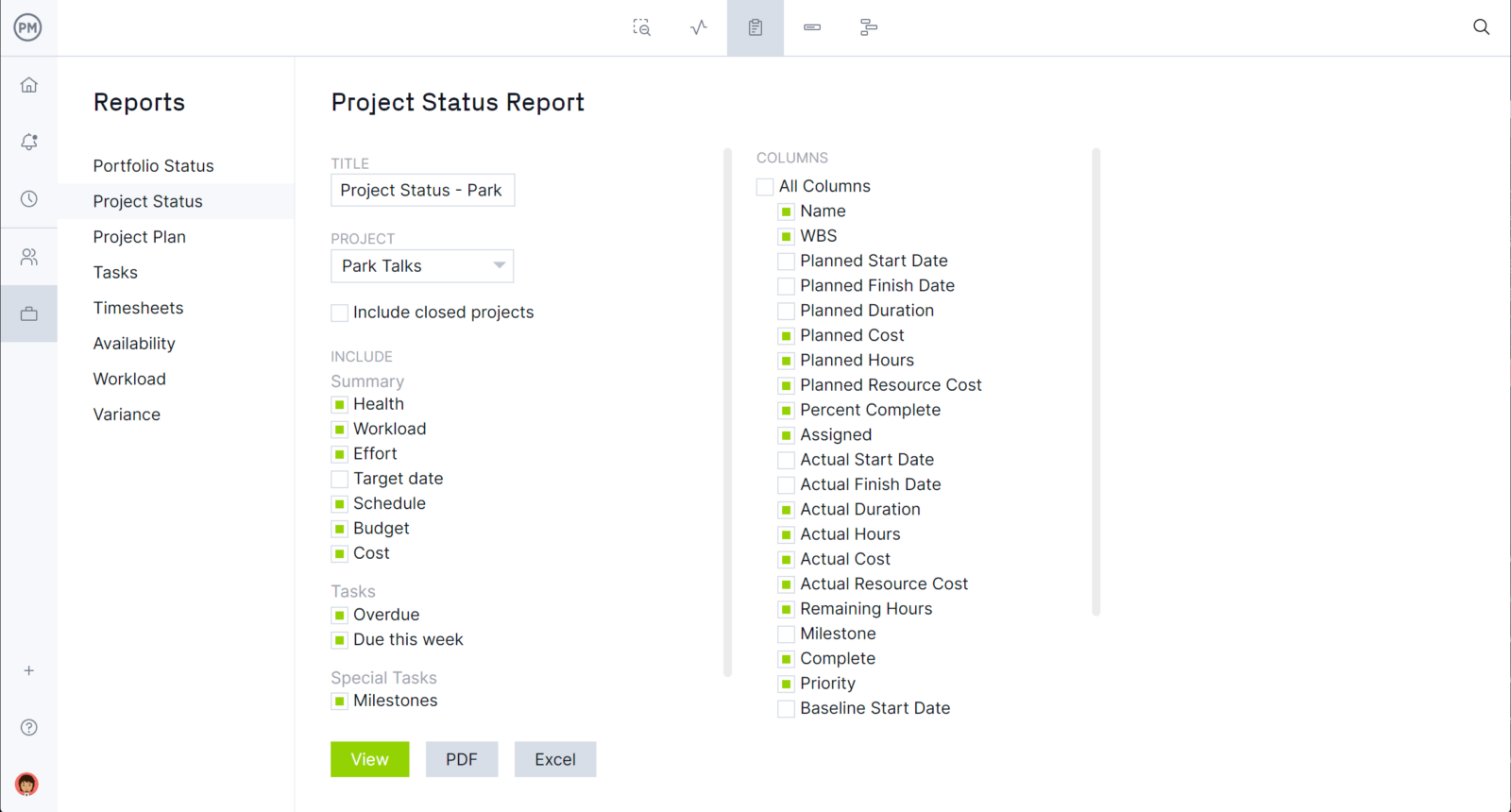
Our dashboards and reports help project managers monitor costs, but there are also secure timesheets that help keep track of labor costs in your project. Other resource management features keep teams working productively to avoid costly delays. For example, color-coded workload charts make it easy to see who on your team is overallocated. You can then balance the team’s workload right from the chart and keep everyone working at capacity to get the most out of your investment.
ProjectManager is online project management software that helps to connect teams whether they’re in the office, on the job site or anywhere in between. They can share files, comment at the task level and more to facilitate better collaboration. Join teams at Avis, Nestle and Siemens who are using our software to deliver successful projects. Get started with ProjectManager today for free.

